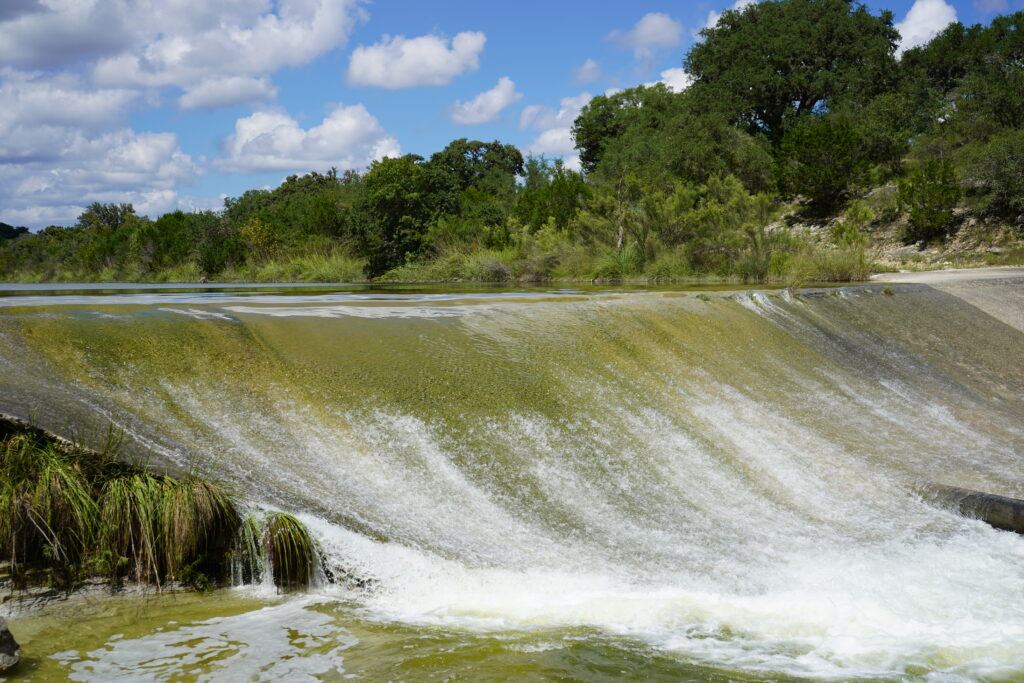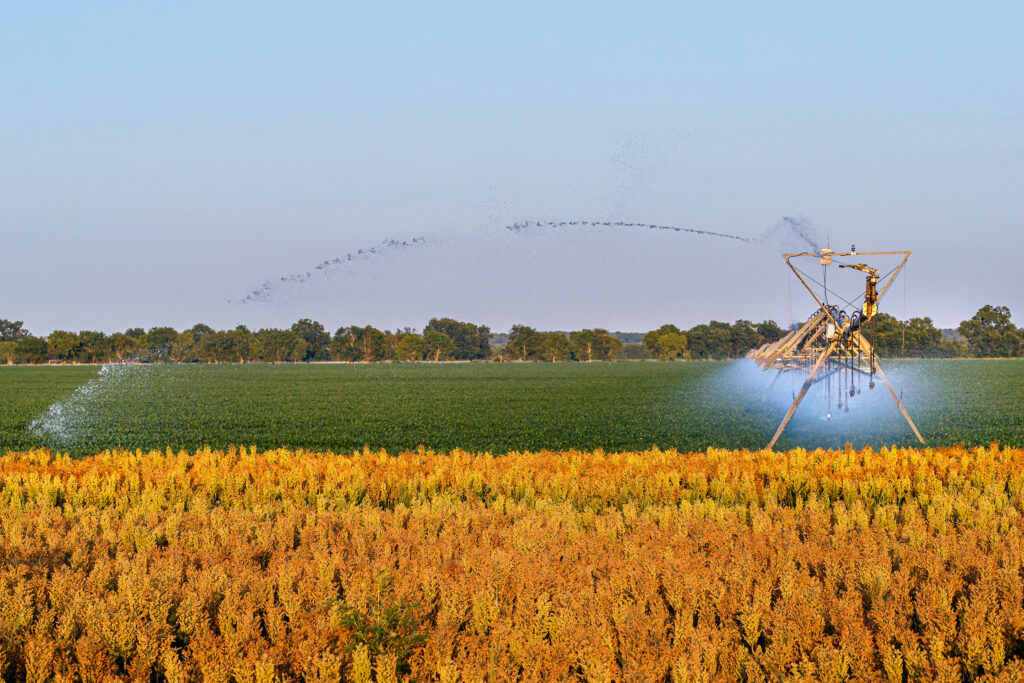By: Ross Studer, Sales Associate, Featured in Republic Report Q2 2023

Water is one of the most valuable resources on earth, it is essential for all life and there is no substitute for it. People who rely on the land for their livelihood use water for various agricultural activities playing an essential role in the world’s food and fiber production. Aside from the fact that water is a necessity for life to exist, there is an additional value of water from any landowner’s perspective.
Depending on the landowner’s objectives, the market generally sees higher value in properties with different types of water development or features. These surface and subsurface features include aquifers, rivers, creeks, lakes, ponds, springs, seeps, guzzlers, water wells and distribution. While some of these water features are natural others can be created through various techniques.
There are 171 million acres in the state of Texas with over 93% of those acres being privately owned. Within the 171 million acres Texas has to offer, there are approximately 3,700 named streams and 15 major rivers accounting for over 191,000 miles of waterways. Why am I mentioning this? Besides the fact that this information is super interesting, it guides me to the point that there are a lot fewer natural water properties than land without the natural water component.
The scarcity factor when searching for these natural water places plays a significant role in driving additional value to these particular properties. This is consistent with dry land farm values versus irrigated farm values on the production agricultural side. Relocating a farm over a quality aquifer is not possible, on the contrary, a recreational-oriented property that does not have natural water features can be enhanced if you Just Add Water!

Here in many parts of Texas, it is said we live in a perpetual drought with intermittent flash flooding and while we enjoy those big rains (if they aren’t too big!) and appreciate their ability to replenish rivers, aquifers, springs, etc., they are infrequent at best and we need the beneficial aspects of water every day of the year. While being cognizant of the semi-finite nature of our water resources, there are things we can do to utilize that resource to benefit the productivity, enjoyment and value of our properties.
Depending on a landowner’s objectives and the availability of water resources, simple projects can be completed to improve a property. Projects vary across a wide spectrum depending on landowner objectives, resources and location but could include the following:
- Water wells and distribution to storage and delivery points across the property benefit foraging distribution for planned grazing and wildlife alike,
- Use of guzzlers (rainwater catchment) where groundwater resources are limited (or distribution too complicated) to achieve similar distribution,
- Header/spreader dams to slow runoff, improve infiltration, provide surface water or a small wetland
- Lake/pond building to capture runoff in drainages provides the additional benefit of a potential fishery assuming permanence,
- Using groundwater (with appropriate permitting as required) to maintain lakes, ponds, etc. for recreational benefits as well as providing water for wildlife and livestock alike,
- Using groundwater for irrigation (with appropriate permitting as required),
- Developing and maintaining springs to benefit wildlife and livestock alike,
Implementing one, two or all of the projects above can add value to a ranch in several ways. It all hinges on the objective of the landowner;
- If the plan is to hold on to a recreational property for generations there is an emphasis of value on the enjoyment factor of recreational surface water or water features enhancing wildlife management.
- If the ranch is strictly an investment with the objective to implement value-adding water-related projects to re-sell at a premium, then the value is monetized at the time of the sale.
- Similarly, if the value is strictly in the form of improved marketability, water development (if done right) will provide a positive showing experience and directly improve marketability. We find that marketability is an extremely valuable contributor when trying to capture the top end of the value range for a ranch.
- One specific way the distribution of water throughout a property (or other water-related projects) adds value is by utilizing those projects and features as part of a 1-D-1 Open Space Agricultural Valuation for Wildlife Management plan; or in the case of regular 1-D-1 Agricultural Valuation added water can allow for more pasture utilization and an enhanced grazing plan to maintain adequate stocking rates. In both cases, the property has the opportunity to enjoy the property tax benefits of the agricultural valuation.
To a large percentage of landowners in Texas these may seem like obvious water-focused ranch projects; however, there are many first-time ranch buyers that are unaware and possibly apprehensive about these projects mainly due to the cost and knowledge involved in accomplishing them. In our experience, whether the market is an active frenzy or slow as molasses if you Just Add Water you may just see the benefit of value: from a financial perspective, a productivity perspective or simply an enjoyment perspective.
